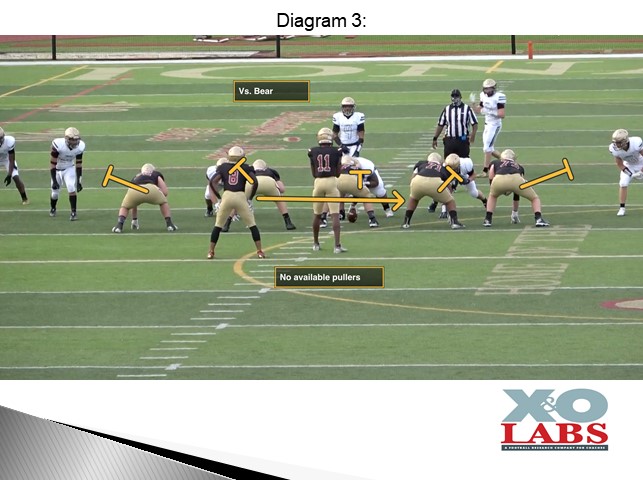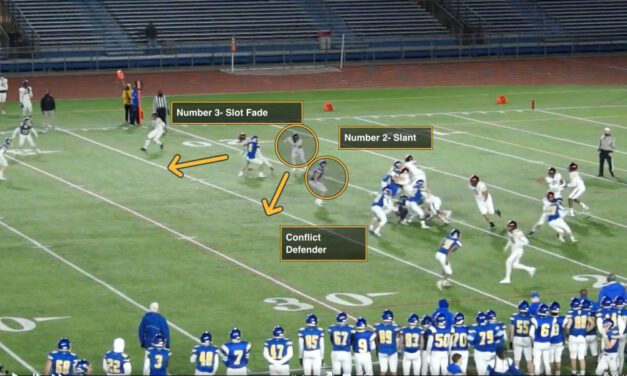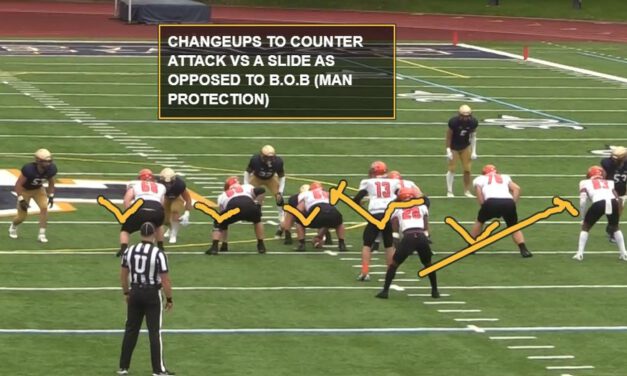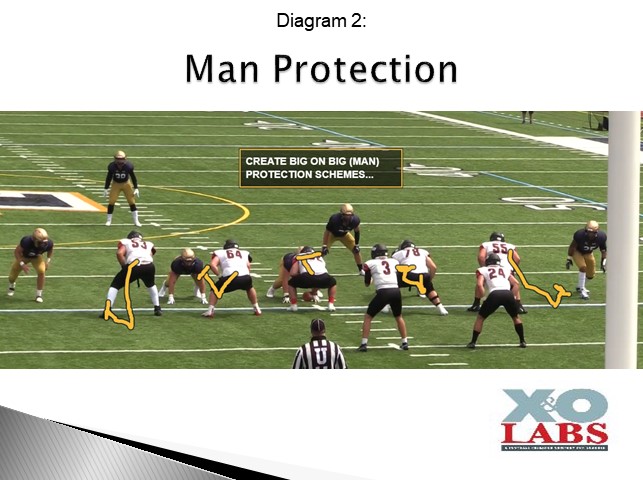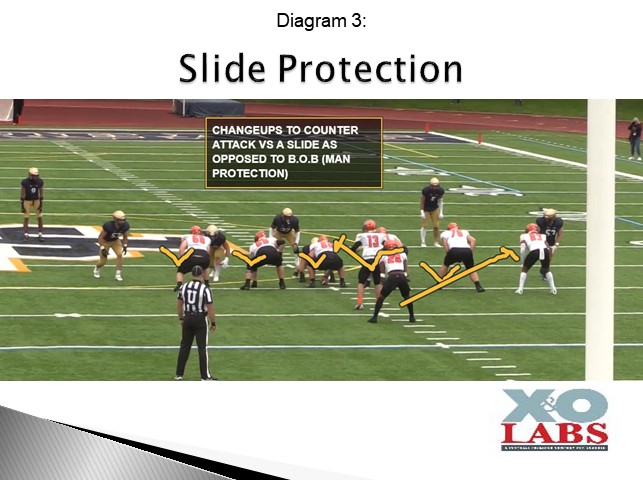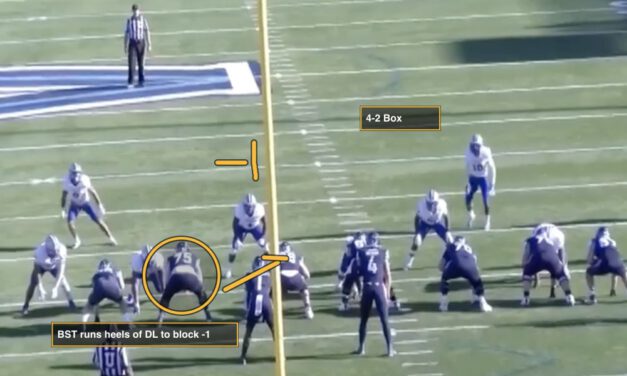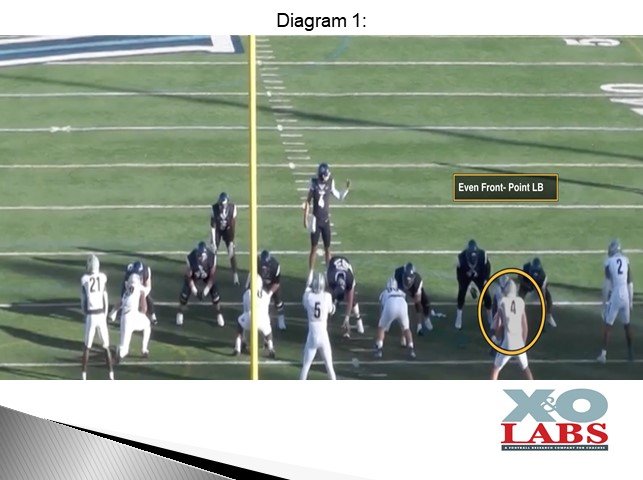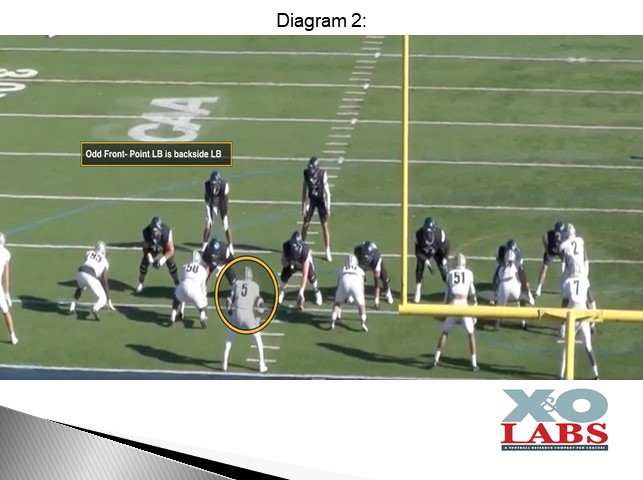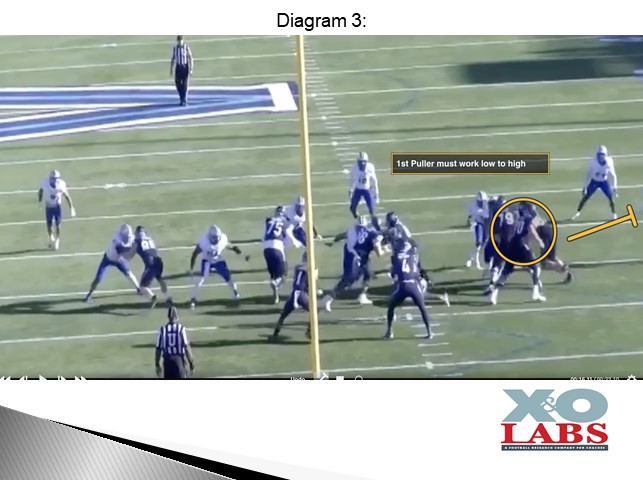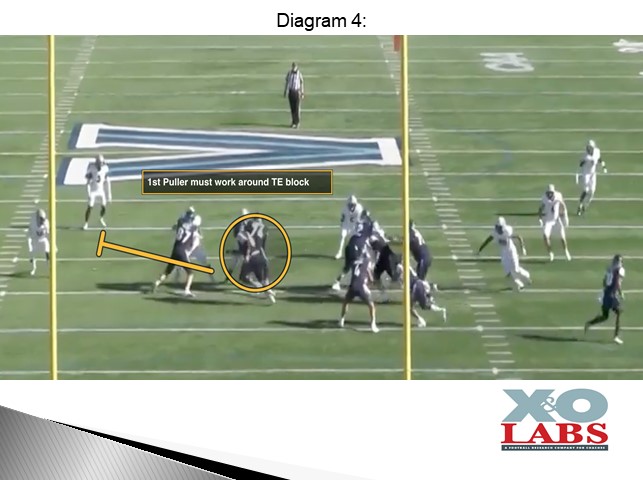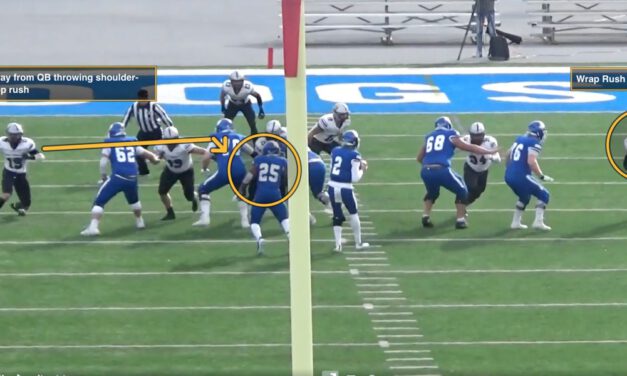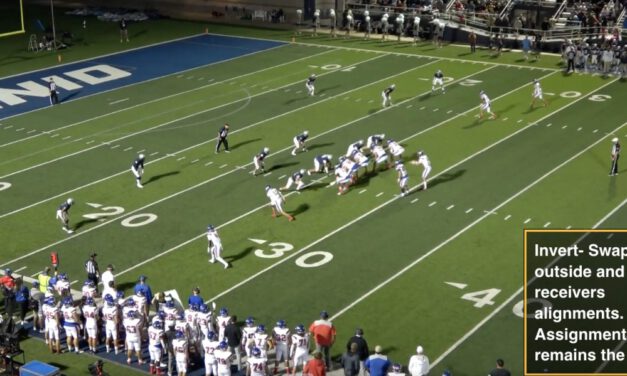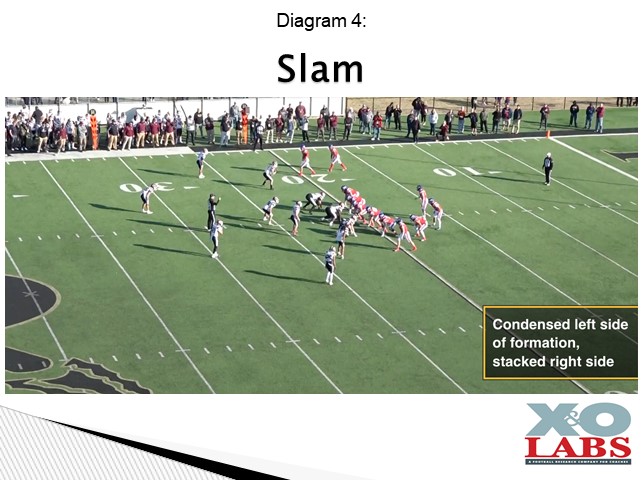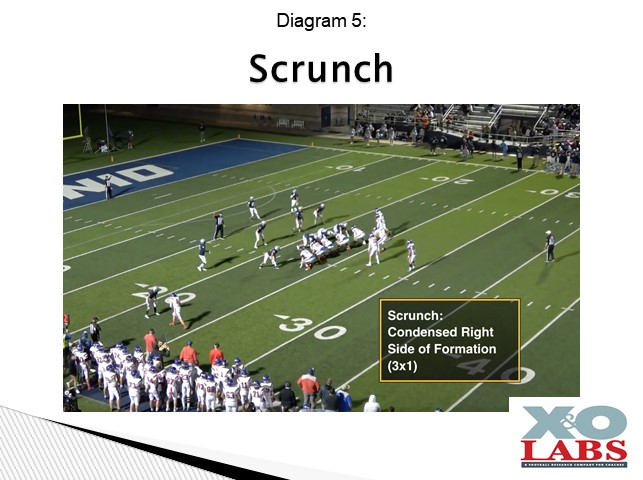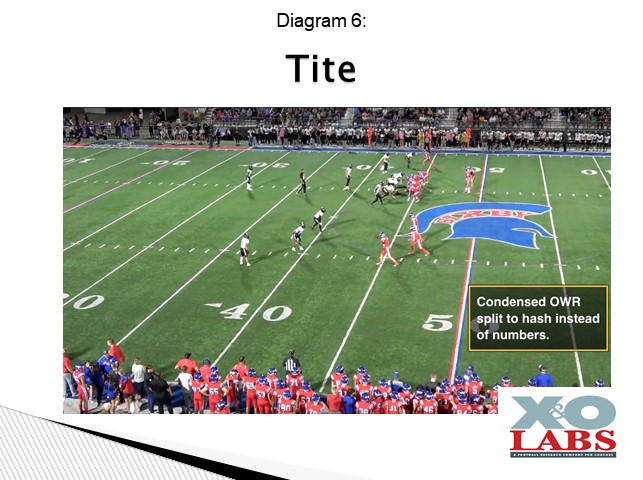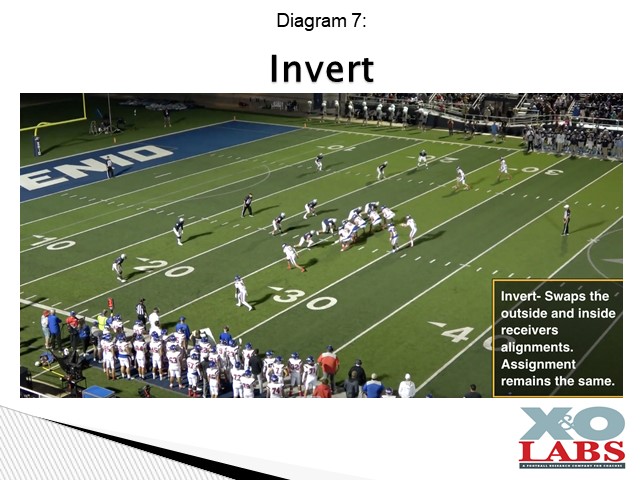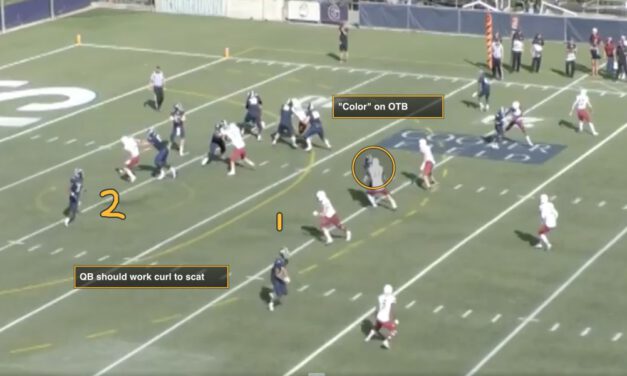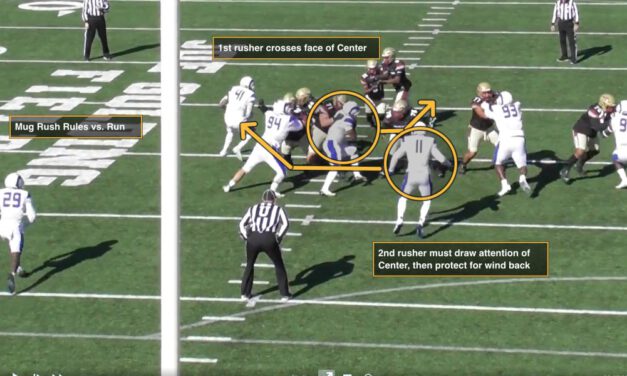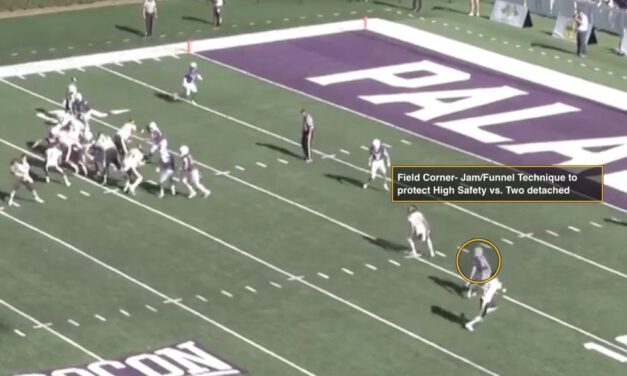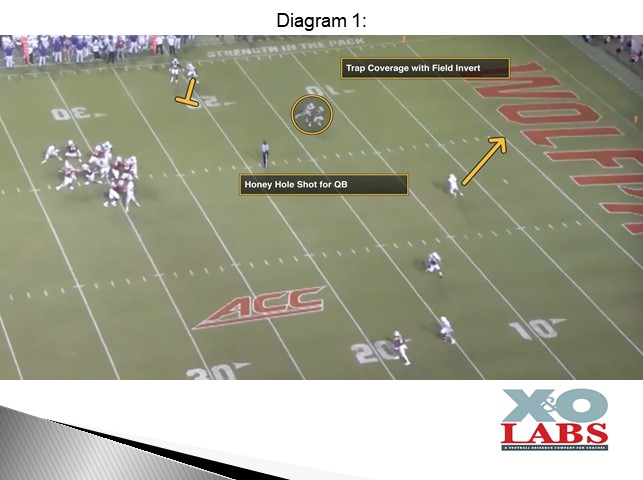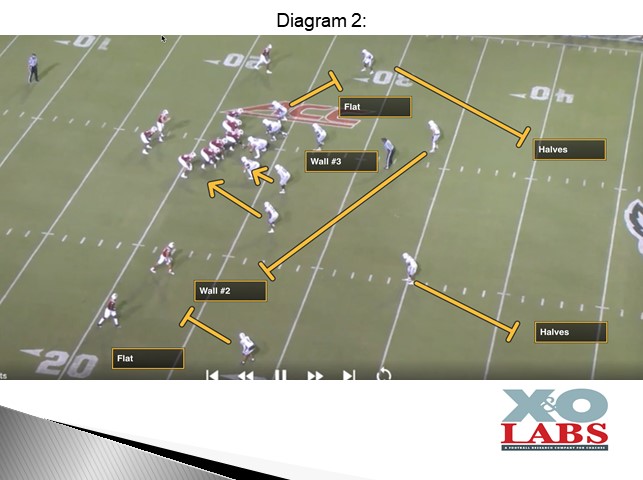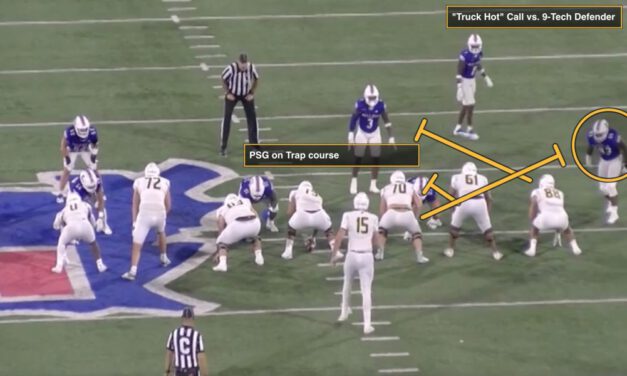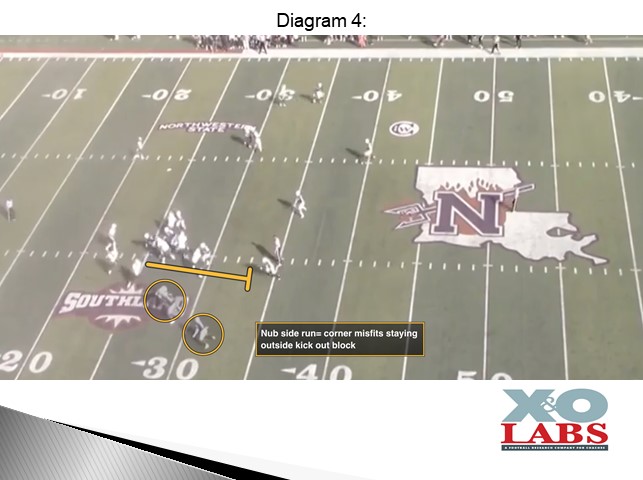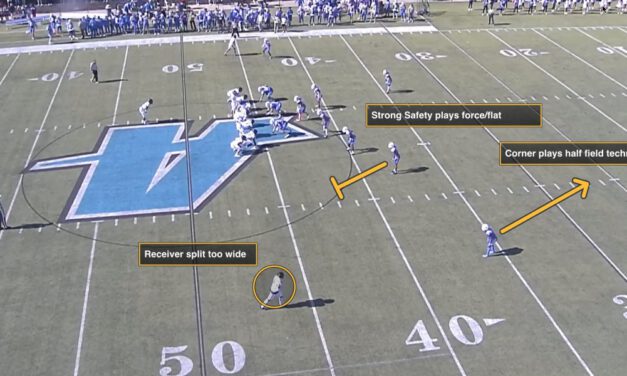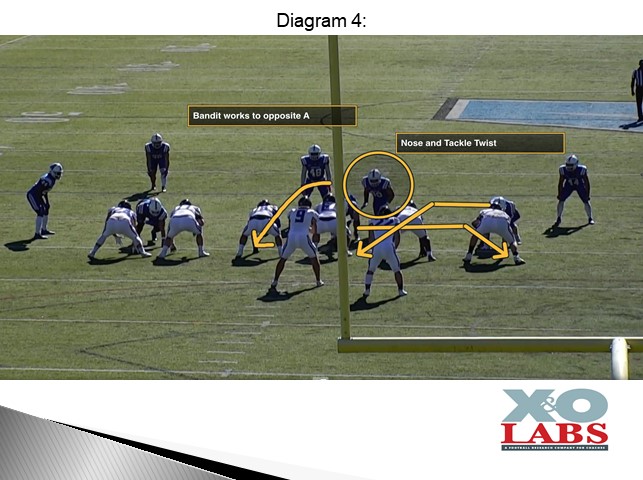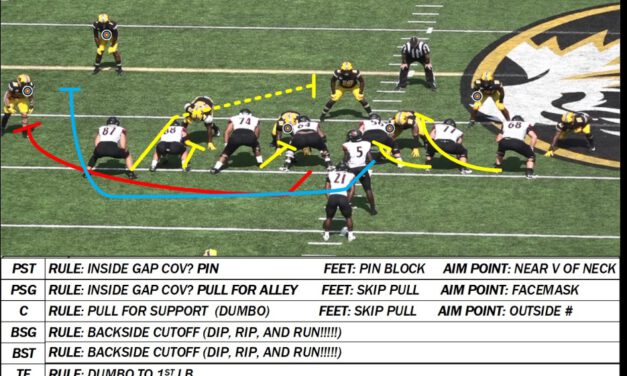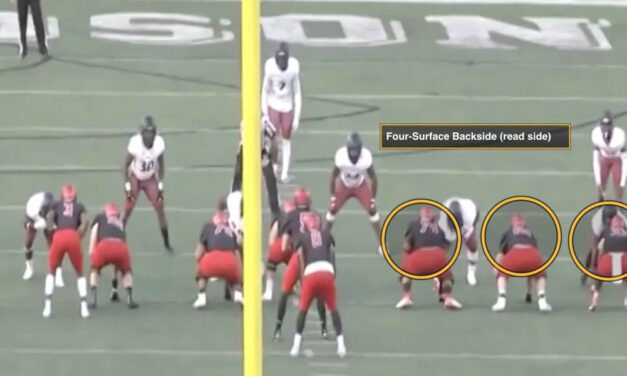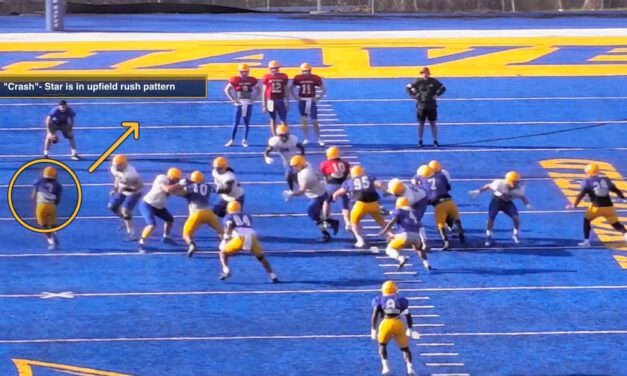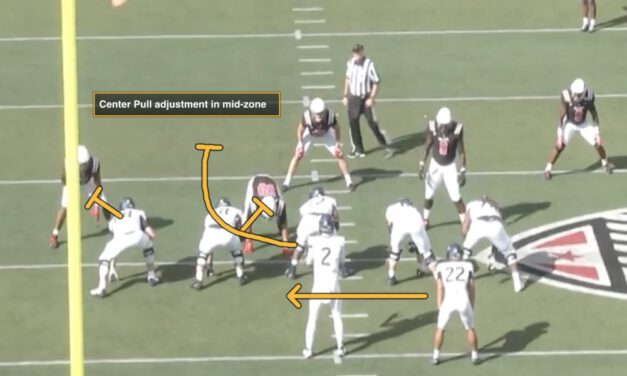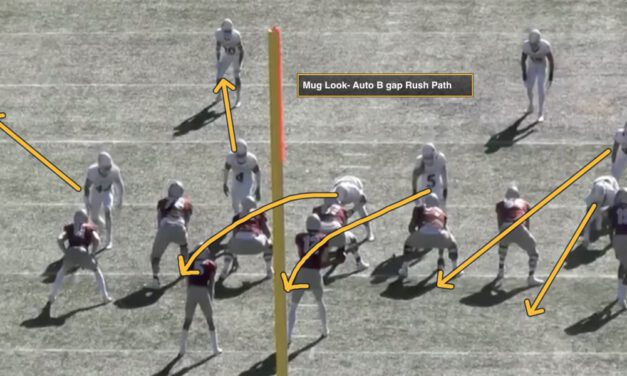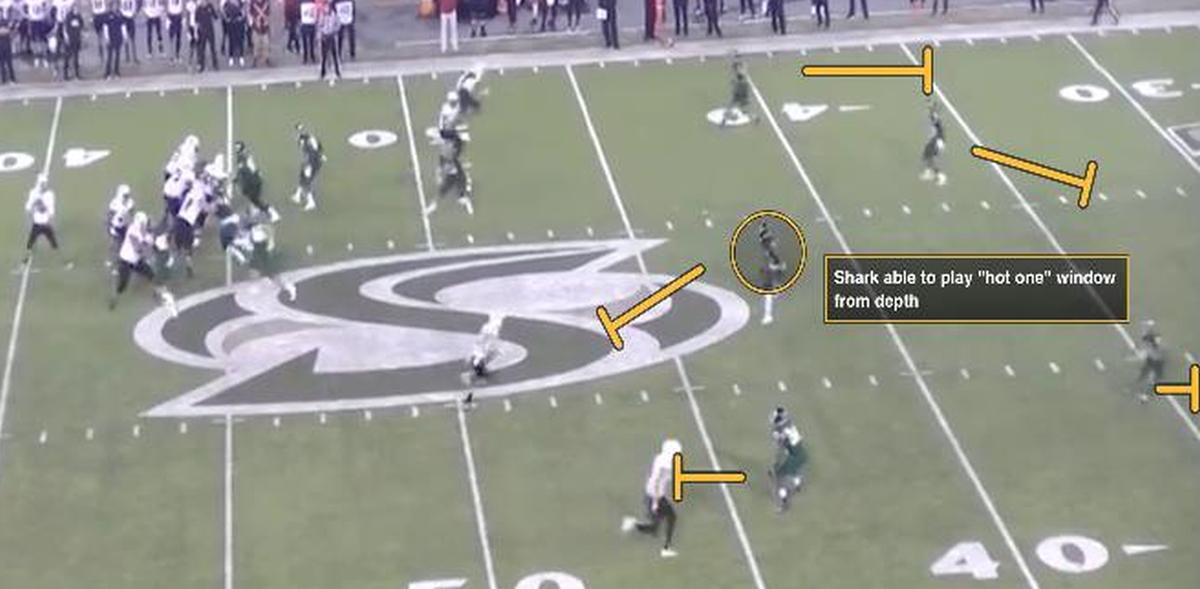Front Side RPOs: Slot Fades Slant Switches from Pin/Pull Action
By Mike Kuchar with Joe Spagnolo
Head Coach
Iona Preparatory School (NY)
Twitter: @Joespags12
At this point in the RPO evolution, most defensive coordinators know how to defend mesh with run action away. But when the run action is presented right in the face of defenders and the quarterback opens to them, they have a hard time adjusting to routes thrown over the top of them. “That’s how you can get 16 year-old kids to stop following their keys and freelancing,” said Coach Spagnolo. And that’s when you get the big gashes in run and pass game. Especially when you’re running it with Tempo.”
Manipulations:
In Coach Spagnolo’s system, every scheme has first, level and third level attachments to it. These can get manipulated from week to week.
First level Reads: If linebackers are not flowing with pin and pull run action, the backside defensive end can be read. With two false pulls, the quarterback works out the backdoor. If they don’t flow, the Tackle can work to the play side LB on his block.
Second Level Reads: These are tagged with in-cuts from slot receivers.
Third Level Reads: These are pre-snap and dual reads. The inside linebacker is an alert. If he blitzes we can’t block him. If he doesn’t blitz we can read third level.
Protection:
While some coaches shy away from utilizing Pin and Pull RPO’s because of the nature of man scheme protection, Coach Spagnolo relies on them heavily to stress the defense. In his system, the backside of the scheme is working man protection when tags are implemented in the play call. Essentially it becomes a “lock” vs. “not lock” scheme.
Vs. Odd Fronts:
Both Guards will automatically pull against Odd fronts, matching the Center on the Nose. The Tackle locks on the 4i technique defender.
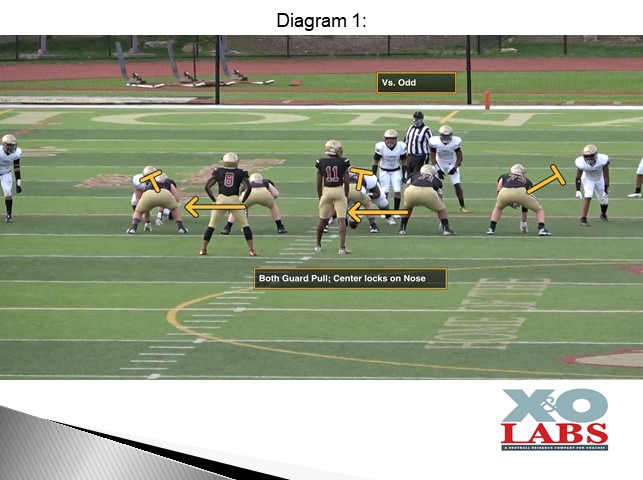
The quarterback is responsible for the Sam linebacker, who can’t be blocked against second or third level RPO’s. “Can’t block the third guy past the Center,” he said. According to Coach Spagnolo, it’s a great concept against a two-gap Nose, who doesn’t slant for risk of knocked off either of the Guard’s pull.
Vs. Even Fronts:
Against Even looks, both Guards are still able to pull to get second level movement. Against a 3-technique play side, the Tackle can block down while the Guard works to log the 5-technique. The Center blocks back on the 2i, allowing the Guard to pull. “We just talk about if we are play side blocking down if we have a defender in our gap,” said Coach Spagnolo. “It’s a good protection against a Shade play side so that your Center can pull.”
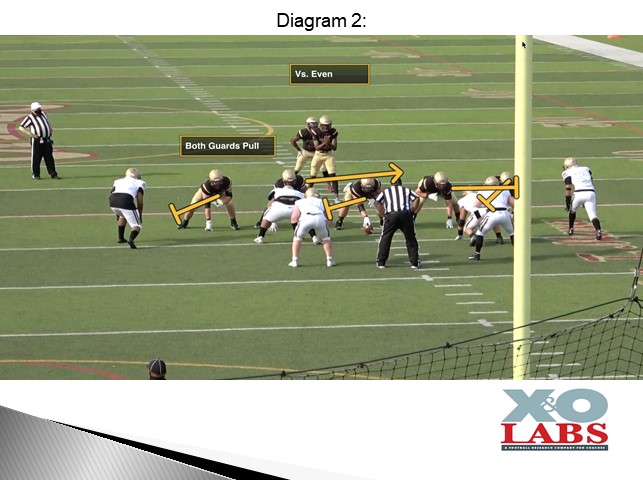
Vs. Bear Fronts:
Any Bear fronts will eliminate potential pullers because of the individual blocks at the line of scrimmage. While Coach Spagnolo mentions the scheme isn’t recommended against Bear, the run action can still move second level defenders.
